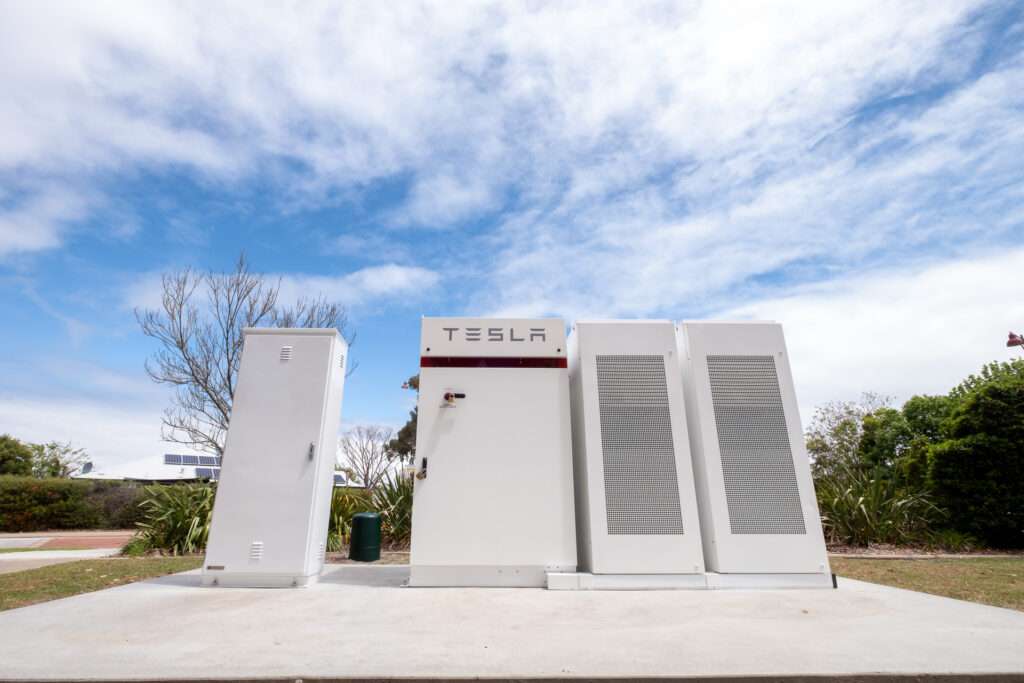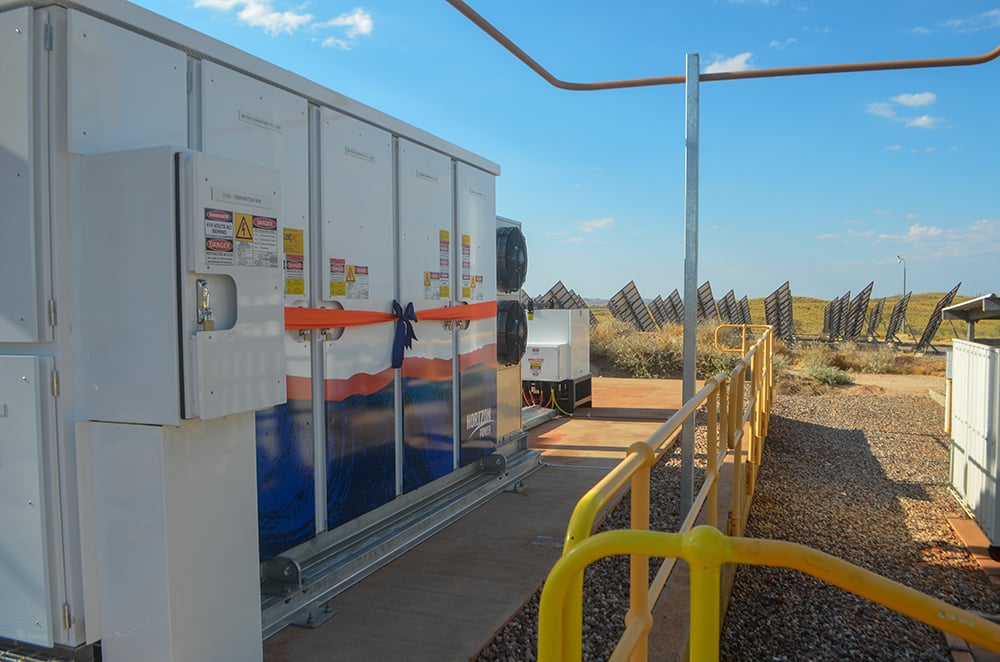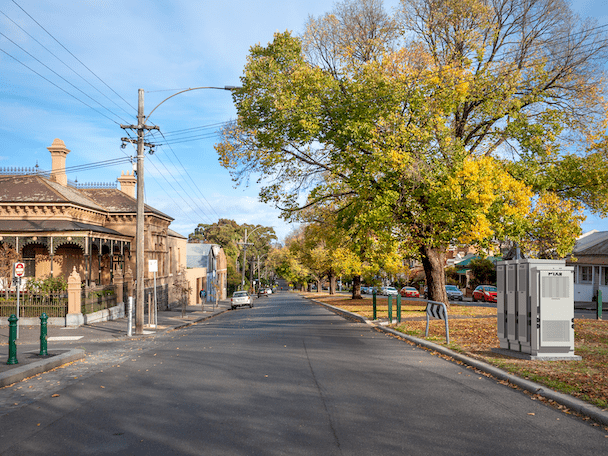
Sometimes called ‘community batteries,’ energy storage systems are being installed at neighbourhood level in Australia. Experts from the Australian National University explain how this type of battery storage can benefit a very wide range of stakeholders.
This is an extract of an article which appeared in Vol.29 of PV Tech Power, Solar Media’s quarterly technical journal for the downstream solar industry. Every edition includes ‘Storage & Smart Power,’ a dedicated section contributed by the team at Energy-Storage.news.
Enjoy 12 months of exclusive analysis
- Regular insight and analysis of the industry’s biggest developments
- In-depth interviews with the industry’s leading figures
- Annual digital subscription to the PV Tech Power journal
- Discounts on Solar Media’s portfolio of events, in-person and virtual
As Australia transitions its electricity supply away from fossil fuel-powered generators to renewable sources of energy, neighbourhood batteries are becoming an increasingly popular form of storage. There are more than one dozen neighbourhood battery projects currently underway across Australia, with a range of ownership and operation models.
It is now, in the early days of neighbourhood battery research development, design and demonstration that we can evaluate the various models and trade-offs inherent in these models. Technology can end up not meeting user needs, or result in negative unintended consequences if we don’t step back to understand their impacts early on.
In the Battery Storage and Grid Integration Program at the Australian National University we have been conducting numerous studies that delve into the socio-techno-economic aspects of neighbourhood batteries.
Our research has revealed that this type of battery can provide a range of benefits for all energy stakeholders, be they energy network operators, energy retailers, market operators, customers, governments, or local councils.
What these batteries have in common is that they are all located close to customers, connected to the distribution network, and can provide stored energy for up to hundreds of homes.
They range in size from a wardrobe to a shipping container, have power capacities of about 0.1 – 5MW and complement household and utility-scale batteries.
Reversing a trend of ‘haves and have nots’
What makes neighbourhood batteries a particularly interesting form of energy storage is that they have the potential to address energy equity and provide benefits to all energy users. Some groups of people, particularly renters and those who do not have solar panels on their rooftops, but also people who might be socially and digitally isolated could all benefit from neighbourhood batteries.
These benefits could be economical, or an increased sense of autonomy and control over their local energy management. This contrasts with how rooftop solar has played out in the Australian context.
Historically residential solar has been a tale of the ‘haves’ and the ‘have-nots’.
Those who can afford to put solar panels on their roof and those who cannot.
Household solar uptake has not happened alongside a broader conversation about what kind of energy system we want. Neighbourhood batteries can hopefully spark those conversations. Our research tells us that people really want to be a part of these conversations and have long felt disconnected from energy decisions that affect them.
Neighbourhood batteries are sometimes referred to as ‘community batteries’ or ‘community energy storage’. We elect not to use these terms because the word ‘community’ implies a degree of community involvement.
Some neighbourhood battery projects absolutely do have this element and we suggest community involvement is required as a principle. It is also the case that other models are allowed in Australia’s current regulatory system that requires little or no involvement from the community. To encompass all models, we use the term neighbourhood batteries.

Australia, the distributed energy resources superstar
Australia leads the world in the uptake of rooftop solar, per capita, with one in four homes with residential PV. Three million solar systems have been installed nationwide, that’s nearly 1kW of panels per person. It is the enthusiastic adoption of rooftop solar by people that has made the country a distributed energy resources superstar.
Integrating this vast amount of solar generation is a major challenge for network operators and there are several ways Australia is tackling this problem from smart software solutions, utility-scale storage, pumped storage and various demand response and other market mechanisms.
In Australia, also notably in the US states of California and Texas and many parts of Europe, grid operators are resorting to solar curtailment when there is not enough transmission capacity to cope with the generation of renewable energy.
The infamous ‘duck curve’ graph indicates the discrepancy between peak electricity demand versus peak solar energy production. Neighbourhood batteries have a role to play in capturing the excess energy generation and storing it until it is needed. But this is just one of the benefits of this type of battery.
Defining and assessing the benefits
The ability to provide benefits to many stakeholders is one of the key reasons why we felt it was important to comprehensively investigate the opportunities for neighbourhood batteries. There are four key elements that describe a range of possible battery models.
» Battery ownership – who will own the battery, and what regulatory considerations might arise due to ownership? Crucially, how might battery ownership influence the prioritisation of benefits to different stakeholders?
» Stakeholder participation – who is a stakeholder in the battery’s operation, and what is their legal and operational relationship with the battery? How do stakeholders benefit from their participation, and what technology is necessary to enable the battery operation?
» Network tariffs – what network tariffs are applied to energy flows into and out of the neighbourhood battery, and how do network tariffs unlock or impact the benefits that can be delivered to stakeholders?
» Services delivered – what market services, such as energy arbitrage and frequency support, can neighbourhood batteries deliver? What non-market services, such as network support (demand response, voltage regulation), do neighbourhood batteries deliver? How can services be value stacked to maximise the battery’s utilisation and cost-effectiveness? Or maybe, due to community discussion, the most ‘optimal’ outcome may actually be an optimisation they can understand, meaning, perhaps not all value streams will be accessed.
By undertaking a socio-techno-economic analysis of various permutations of these four key considerations, we have been able to assess how different neighbourhood batteries create value for energy users, distribution networks, electricity retailers and the broader electricity system. Our work has so far revealed that neighbourhood batteries can deliver five essential benefits.
They can:
1. Improve the fairness of the energy system
2. Build trust in the energy system by sharing value transparently
3. Increase the hosting capacity of the network
4. Bolster local resilience, including socially, economically, and electrically
5. Be cost effective by delivering services to many stakeholders.
We note that more benefits may become clear as we roll out this technology at scale.

The economics of neighbourhood batteries
The issue of network tariff reform has historically been a contentious one in Australia, in the context of high uptake of household solar. We have studied the operation of neighbourhood batteries under a range of local network tariff models, using current Australian electricity prices and current network prices as a reference.
Our modelling shows that neighbourhood batteries would only be financially feasible if the local network tariff was discounted. This is due to the tariff applying to both the charging and discharging of the battery, meaning the system is double-charged.
Previous proposals to address this issue have generally either applied a discount to network tariffs for local energy flows or created a secondary energy market for peer-to-peer transactions. The former is expected to result in a zero-sum wealth transfer between networks and customers, and the latter has faced implementation and regulatory complexities.
Our modelling, however, demonstrates that a discounted local use of system (LUOS) network tariff could be introduced without the expected zero-sum wealth transfer, if a neighbourhood battery is included in the local system. This is due to the increased number of transactions on the network as the battery charges and discharges, such that the network receives the same revenue even though the network tariff is discounted. Network charges incurred by the neighbourhood battery owner can be offset by the revenue earnt from energy arbitrage.
In this way, all stakeholders (network, customers, battery owner) can be financially better off compared to a system with no neighbourhood battery and the normal network tariff.
The clear recommendation from our analysis is that the price of LUOS needs to be less than half of conventional distribution network tariffs, allowing for mutually beneficial economic outcomes for all stakeholders.
This is an extract of an article from Volume 29 of PV Tech Power, our quarterly journal. You can buy individual issues digitally or in print, as well as subscribe to get every volume as soon as it comes out. PV Tech Power subscriptions are also included in some packages for our new PV Tech Premium service.
About the Authors
Sarah Wilson is communications manager for the Battery Storage and Grid Integration Program at the Australian National University.
Hedda Ransan-Cooper leads the social research at the Battery Storage and Grid Integration Program at the Australian National Unversity.
Bjorn Sturmberg is a research leader in the Battery Storage and Grid Integration Program at the Australian National University.
Lachlan Blackhall is entrepreneurial fellow and head, Battery Storage and Grid Integration Program at The Australian National University.
Marnie Shaw is a senior research fellow in the School of Engineering and a research leader in the Battery Storage and Grid Integration Program at the Australian National University.

